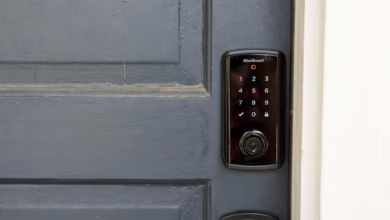Wyze Cameras: Regaining Your Trust in Home Security

▼ Summary
– Wyze introduced VerifiedView, a security feature embedding user IDs into media metadata to block unauthorized access to footage.
– The company faced past security issues, including undisclosed vulnerabilities and incidents where users saw others’ camera feeds.
– Wyze has invested millions in security upgrades, including expanded teams, two-factor authentication, and monitoring tools.
– VerifiedView is now available on popular Wyze cameras via firmware updates, with plans to extend to older models.
– Wyze opted for VerifiedView over end-to-end encryption to preserve features like AI notifications and third-party integrations.
Smart home security just got stronger with Wyze’s latest innovation designed to protect your privacy. The company has introduced VerifiedView, a groundbreaking feature that embeds user identification directly into camera footage metadata. This extra security layer ensures only authorized accounts can access photos, videos, or live streams, blocking potential breaches before they happen.
Wyze’s leadership admits past security lapses forced a complete overhaul. “We recognized these mistakes threatened our future,” says Dave Crosby, Wyze co-founder and CMO. The company faced criticism after incidents where users accidentally viewed others’ camera feeds, a problem VerifiedView aims to eliminate.
How does VerifiedView work? Every piece of footage now carries a unique user ID. When someone tries to access the content, the system cross-checks this ID with the account credentials. If they don’t match, access is denied. Cybersecurity experts compare this to digital rights management (DRM), calling it a smart adaptation of proven anti-piracy technology for home security.
Beyond VerifiedView, Wyze has invested millions in strengthening its infrastructure. The company expanded its security team, enforced mandatory two-factor authentication, and launched a bug bounty program. Older camera models lacking compatible hardware won’t support the feature, but Wyze is exploring solutions for legacy devices.
One lingering question: Why not implement end-to-end encryption (E2EE)? Crosby explains that while E2EE offers robust protection, it disrupts popular features like Alexa integration and cloud-based AI alerts. VerifiedView strikes a balance, delivering comparable security without sacrificing functionality.
Wyze also hints at future enhancements, including local processing upgrades and the return of Real-Time Streaming Protocol (RTSP) for advanced users. These changes reflect a broader shift toward hybrid cloud-edge systems, where simpler tasks happen locally while complex analytics remain cloud-based.
Despite the costs, Wyze promises VerifiedView will remain free, no premium paywall. For homeowners prioritizing both security and convenience, this update could mark a turning point in rebuilding trust with the brand. As Crosby puts it, “We’re committed to making sure these issues never happen again.”
The rollout is already live for top-selling models like the Wyze Cam v4, v3, and Pan v3, with wider availability coming soon. Users can check their device compatibility on Wyze’s website and install the firmware update to activate the feature immediately.
With cyber threats evolving, VerifiedView represents a proactive step—not just for Wyze, but for the smart home industry as a whole. By blending advanced cryptography with user-friendly design, the company hopes to set a new standard for affordable, secure surveillance.
(Source: The Verge)
